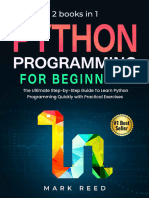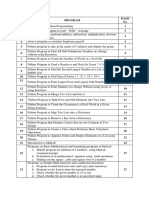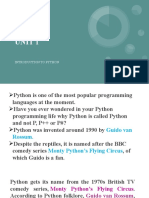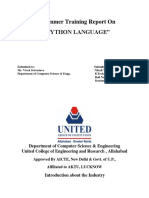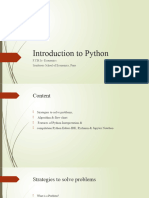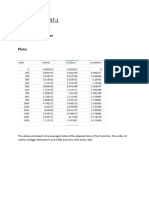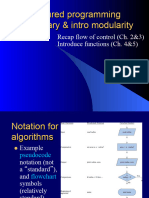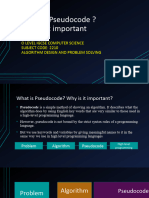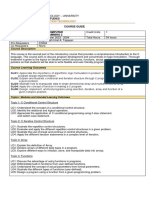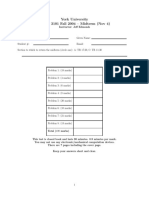0% found this document useful (0 votes)
10 views9 pagesComprog Reviewer Midterm 1
The document outlines the programming cycle, which includes problem definition, planning, design, coding, testing, and debugging, emphasizing the importance of structured development and quality assurance. It introduces key programming concepts such as algorithms, pseudocode, and flowcharts, along with the benefits of using Python as a programming language for various applications including web development, scientific computing, and education. Additionally, it discusses Python's unique features, data types, and variable naming conventions, highlighting its readability and ease of use.
Uploaded by
azielairontCopyright
© © All Rights Reserved
We take content rights seriously. If you suspect this is your content, claim it here.
Available Formats
Download as PDF, TXT or read online on Scribd
0% found this document useful (0 votes)
10 views9 pagesComprog Reviewer Midterm 1
The document outlines the programming cycle, which includes problem definition, planning, design, coding, testing, and debugging, emphasizing the importance of structured development and quality assurance. It introduces key programming concepts such as algorithms, pseudocode, and flowcharts, along with the benefits of using Python as a programming language for various applications including web development, scientific computing, and education. Additionally, it discusses Python's unique features, data types, and variable naming conventions, highlighting its readability and ease of use.
Uploaded by
azielairontCopyright
© © All Rights Reserved
We take content rights seriously. If you suspect this is your content, claim it here.
Available Formats
Download as PDF, TXT or read online on Scribd
/ 9




